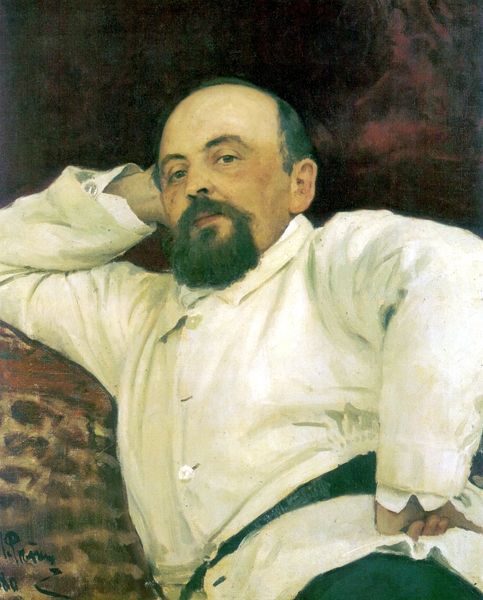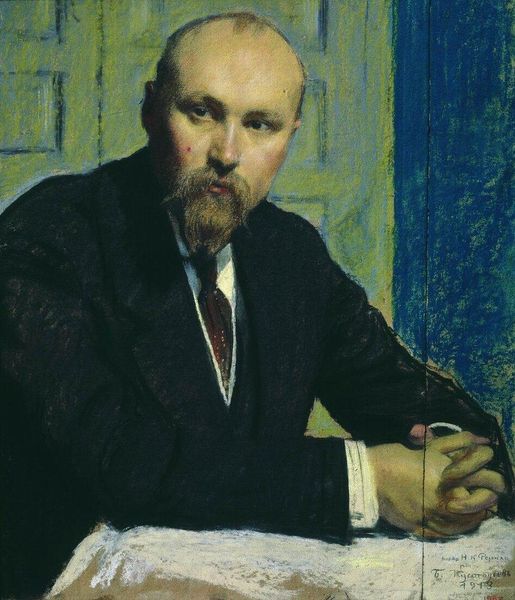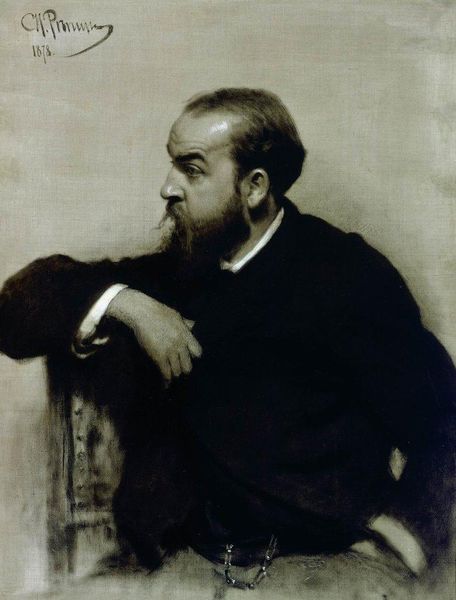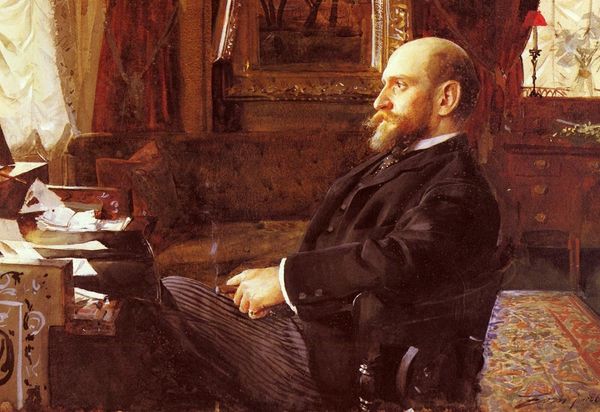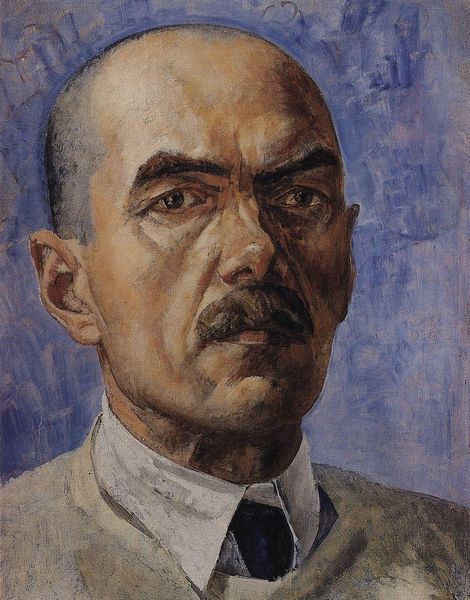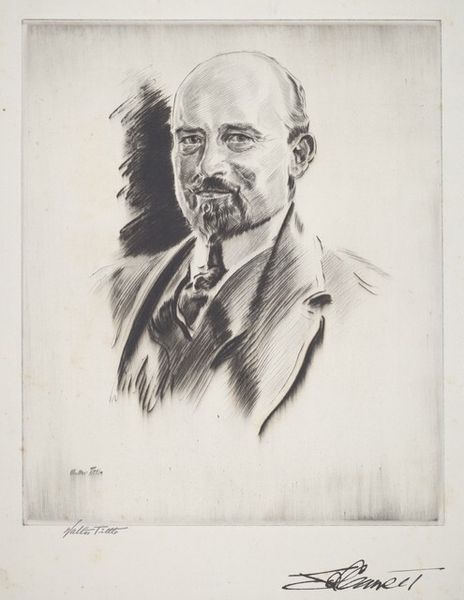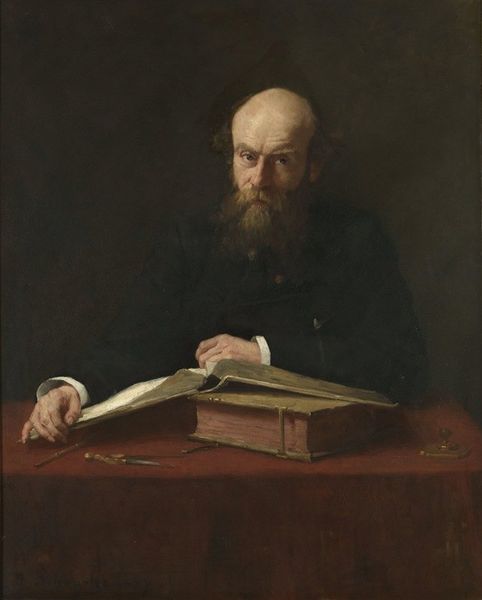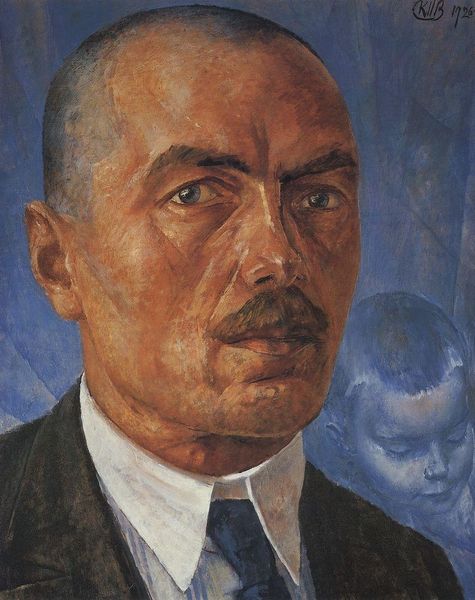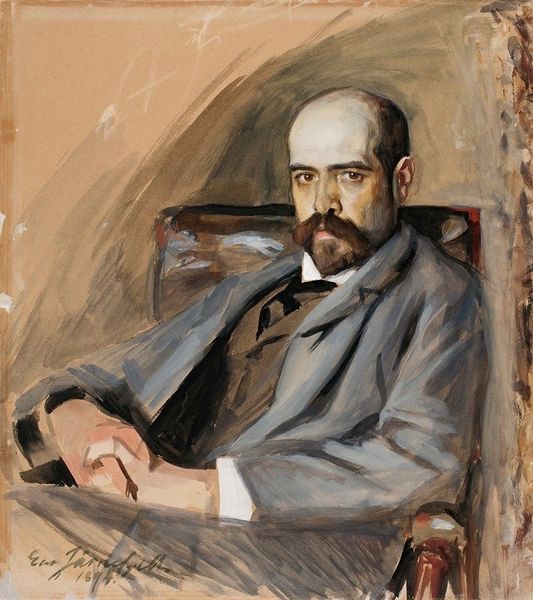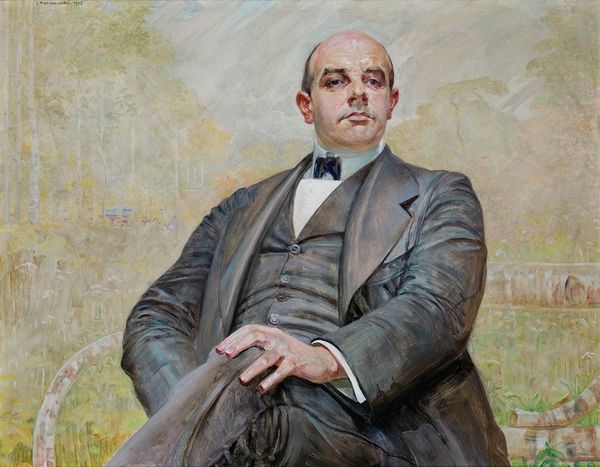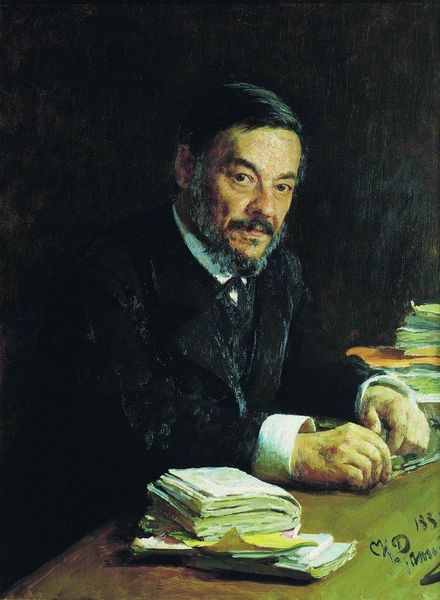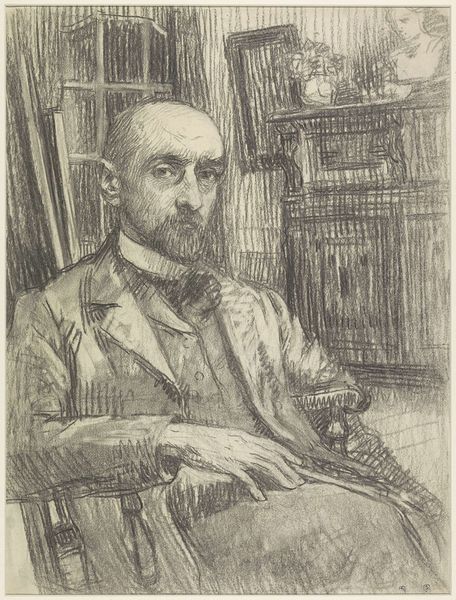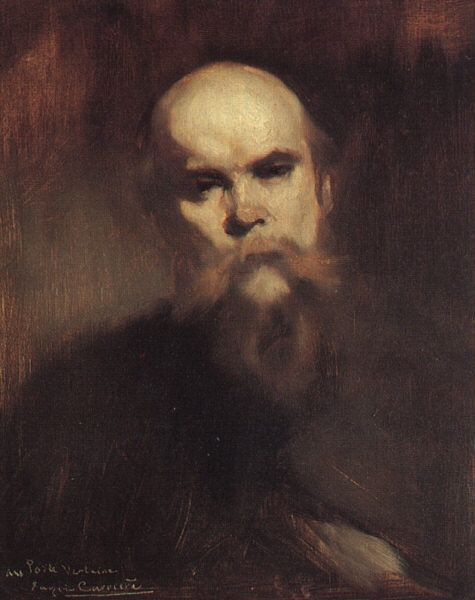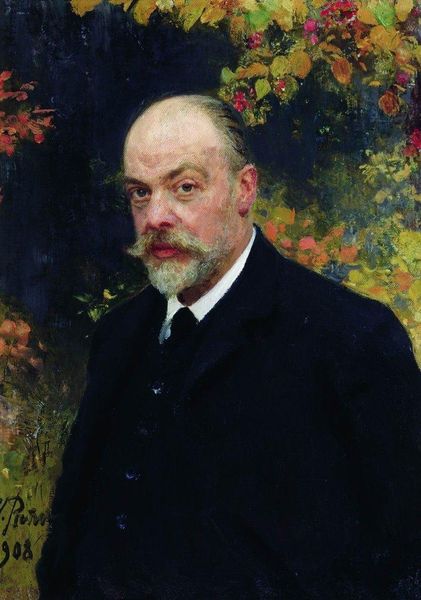
painting, oil-paint
#
portrait
#
painting
#
oil-paint
#
soviet-nonconformist-art
#
social-realism
#
history-painting
Copyright: Public domain
Curator: Let’s turn our attention to Kuzma Petrov-Vodkin’s “Portrait of Lenin,” created in 1934 and now residing here at the National Gallery of Armenia. It's quite a compelling piece, isn't it? Editor: It is. I’m struck immediately by the muted color palette. Everything feels very deliberate, understated. The overall effect gives me a feeling of restrained power. Curator: Restrained indeed. Looking closely at the brushstrokes, one can discern how Petrov-Vodkin builds texture with thin layers of oil paint. Note especially the treatment of the face and hands – almost porcelain, suggesting refinement, but not quite... The visible layering speaks volumes about the making process and craft. Editor: And the context of that "refinement" is key. Remember, this portrait comes from the Stalinist era when depictions of Lenin were carefully curated to construct a certain image. Look at the map on the wall behind him. What lands did the Soviet project intend to capture? It’s important to read the symbolism in relation to political ambition and control. The subject gazes directly out at us as if scrutinizing what we the viewer are thinking of him. This creates an interesting tension and places power into the sitter. Curator: Exactly. And think about the labor invested in creating this illusion! The canvas preparation, the mixing of paints... Consider also how that labor might have been valued - or exploited - within the Soviet system, with different roles given based on education or gender. These factors, in turn, impacted not just the production but also the consumption of art in the period. Editor: Precisely! And further questions about consumption arise, such as what kind of audience would have had access to such portraits of political power. Furthermore, given the political conditions in Russia and abroad, does this artistic act intend to challenge or celebrate soviet political conditions? Curator: So, when it comes to its material making, it’s a portrait of great labor under pressure in a specific political setting, the effects of which contribute significantly to the visual rhetoric that this work offers us. Editor: Definitely, and through interrogating the social structures of the USSR this painting, though a simple portrait at first glance, illuminates just as much of its environment than of Lenin as an individual. Curator: Indeed, seeing beyond the immediate image reveals intricate insights into labor, materials, and socio-political climate of the Soviet Union. Editor: I agree, and by understanding this portrait's relationship to power and representation, we gain critical perspective on both its creation and its legacy.
Comments
No comments
Be the first to comment and join the conversation on the ultimate creative platform.
